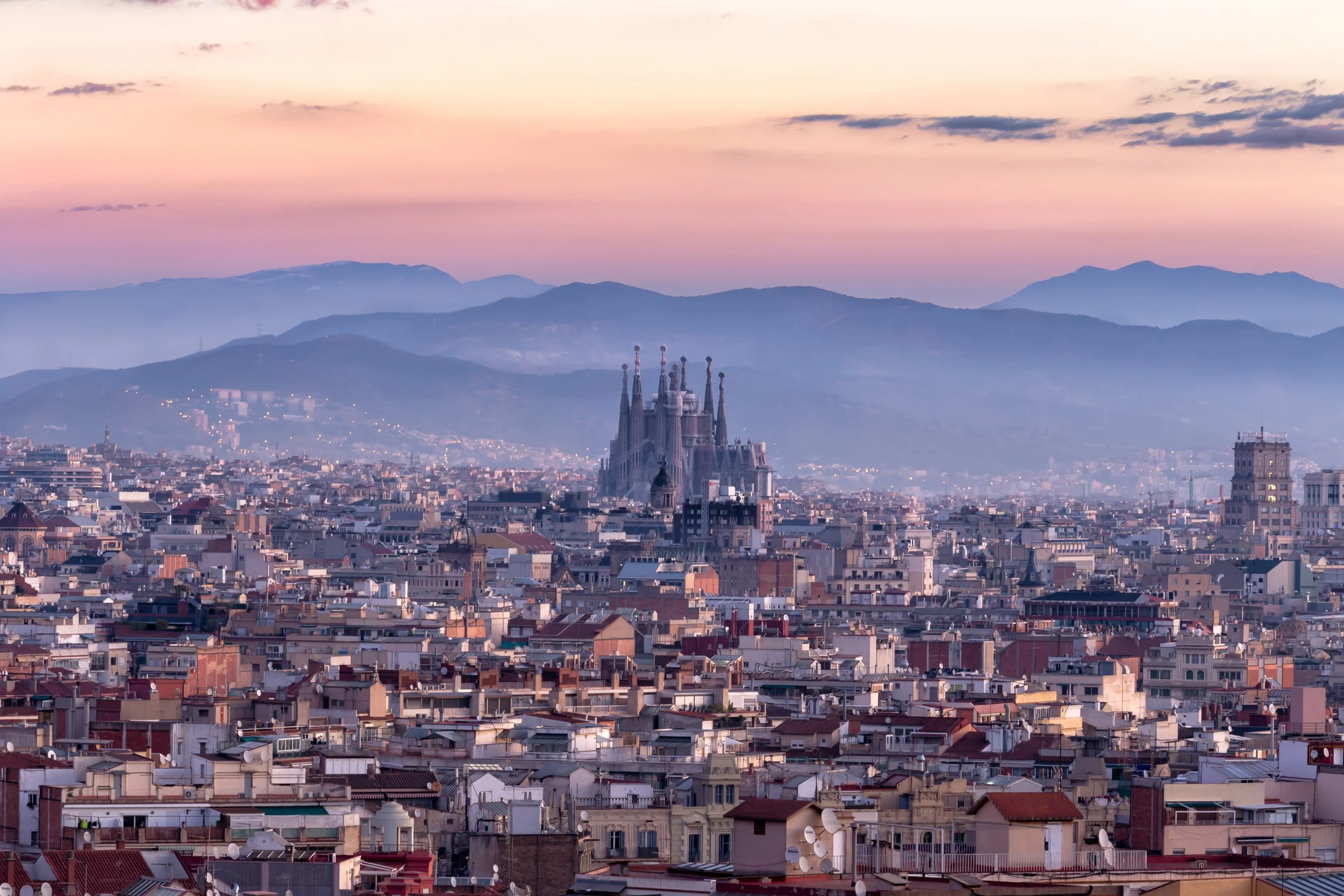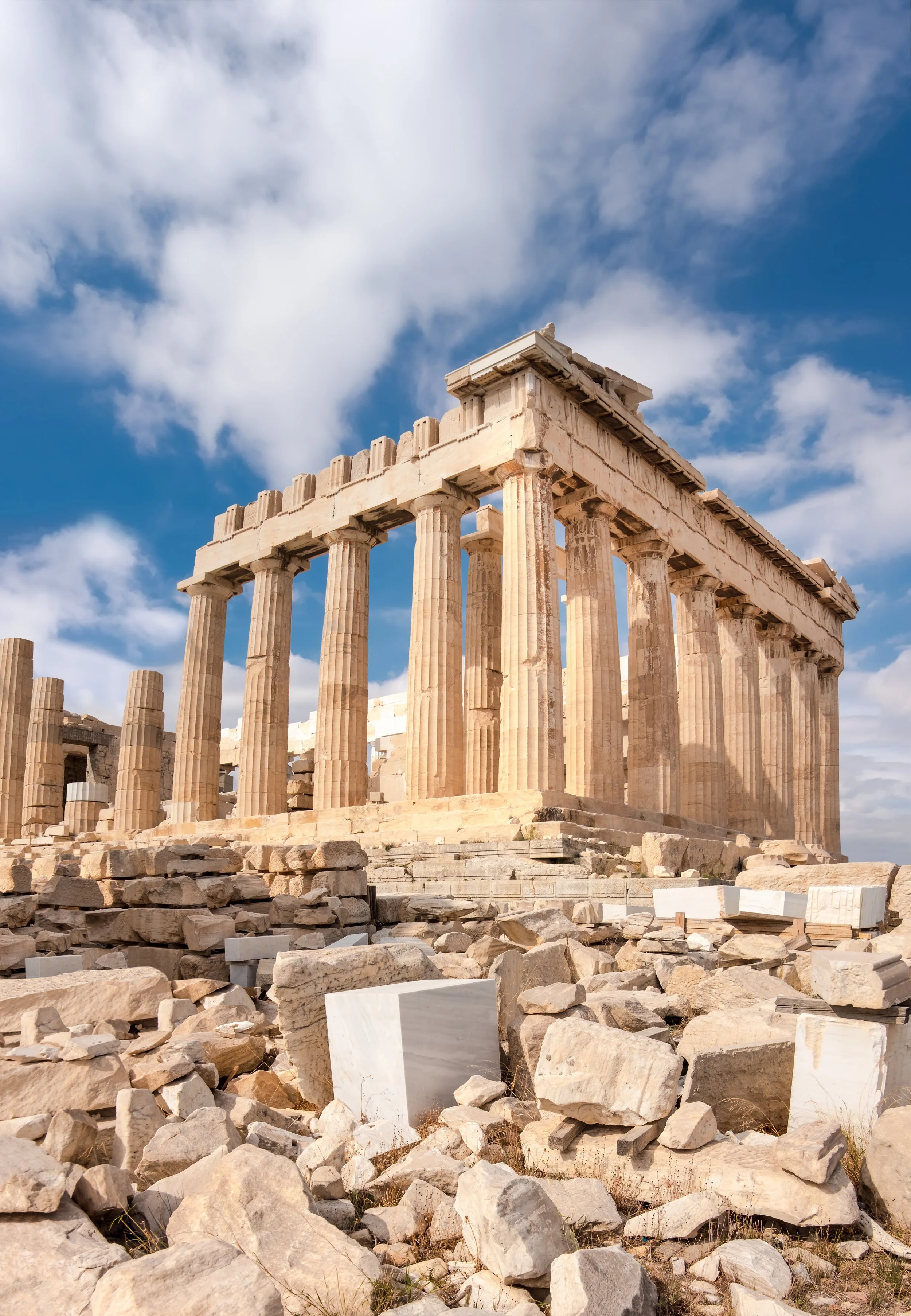The Parthenon | Stories Architecture Can Tell
Recent restoration and analysis of the Parthenon, in tandem with other discoveries, have uncovered a wealth of new information regarding this iconic architectural masterpiece. Much of this information challenges and presents new perspectives about the conventional understanding of the structure.
For millennia, the Parthenon has developed into a symbol that exemplifies the paragon of architectural beauty. In popular culture, the Parthenon represents rationalism, individualism, democracy, stability, and power. We must ask ourselves: Does this contemporary interpretation accurately reflect the original and authentic intentions of its builders? How did we come to form our modern understanding of the structure?
The Creation of a Symbol
This association arose during the Enlightenment, primarily through the writings of the historian Johann Winckelmann. In his book History of the Art of Antiquity, published in 1764, he associated the Parthenon with Western democracy and individualism. These ideas were popular during the writing of his book and seem to be a projection of the philosophies onto the Parthenon. His position was that the pinnacle of Greek art and architecture occurred simultaneously with the development of democracy. While there may be a degree of truth to this, concluding that the Parthenon was intended to communicate democratic ideals may be a presumptuous assumption that lacks a nuanced understanding of the building and its history. After this interpretation was published, it seemed to catch fire, with little questioning of its precision and assumptions.
Winkelmann’s writing and others expound on his ideas and began to turn the Parthenon into a cultural symbol. Buildings mimicking the style and language of the Parthenon started to appear. Banks, government buildings, homes and others were constructed using the architectural language of the Parthenon, hoping to suggest or evoke the same association that Winckelmann had made in his book. Soon, the association became widely accepted and popularized.
For decades, no one thought to revisit this assumption and ask: Was democracy and rationalism the core intention of the Parthenon?
New Discoveries
In 1902, a French archaeologist found hundreds of Ptolemaic mummies. One of the wrappings had Greek writing on the papyrus used to make the paper mache.
When scribes copying ancient scripts in Alexandria made a mistake, they had to discard the entire writing sheet. Papyrus was a valuable commodity, so morticians reused it in the mummification of dead people, wrapping people in paper mache from discarded papyrus. These burials have become excellent sources of ancient Greek text.
The challenge was to remove and deconstruct the papier mache mummies and preserve the papyrus sheets with the writing on them. In 1963, scientists deconstructed a mummy using the lost play from Europodes. The story of this play matches the story in stone depicted on the frieze in the Parthenon. It was the story of the sacrifice of the king and queen's daughter to save the city.
Upon learning about the discoveries, American Archaeologist Joan Connelly began to question the conventionally accepted interpretation of the Parthenon. She sensed an underlying set of ideas and beliefs central to the Parthenon, and the notions of democracy and individualism were inappropriately attributed. She felt that the building was telling a different story than the one our contemporary society had widely accepted.
She came to this conclusion, in part, through the sculptural elements throughout the building. The sculptures in the Parthenon's pediment and frieze tell a story drastically different from that of democracy, stability, and rationalism. The sculptures depict a highly spiritual society founded on mythic tales and cult rituals.
The sculptures on the Parthenon’s frieze are our best resource for insight into Athenian consciousness. They include a series of sculptural engravings depicting mythical scenes with people, horses, and animals. Over the years, many interpretations of the imagery on the frieze have been made.
Connelly found striking similarities after comparing the frieze with the papyrus text telling the story of Euripides’s Erechtheus. Both depict a family with the mother, father, and three daughters preparing for an act of ultimate sacrifice. The gods would task the father to sacrifice one of his daughters for their city's love, prosperity, and perpetuation. The two other daughters would also be sacrificed as they would jump to their deaths off the Acropolis. All Athenians would immediately recognize this sculpture as the founding myth is deeply embedded in their culture. It communicates the hierarchy of values in their society, suggesting that they should sacrifice their individuality and self-interest for the prosperity of their community.
Connelly believed that the sculptures on the frieze told the story not of the Athenians who built the Parthenon, and the contemporary ideas of democracy and individualism as Winkelmann had hypothesized, but instead of ancient mythical Athenian tales from farther back in Greek history, way before the Parthenon was built.
Depicting mythological stories on buildings was common in the culture and exhibited on other parts of the Parthenon. These engravings communicated the city's founding myths and the values that Athenian society hoped to convey to generations of Athenians.
The Stories that Buildings Tell
In ancient Athens, there were limited methods of passing down the ideals, morals, wisdom, and stories that formed the glue of Athenian society. The written word in scrolls was limited in its ability to transmit ideas due to the low literacy rates in society. Verbal transmission was relatively effective but was highly volatile and susceptible to misinterpretation and loss between generations during wars or plagues.
Large-scale monumental architecture was one of the most effective means of transmitting a culture's stories, values, and morals through generations. With architecture, the imposing scale, permanence, and grandeur would immediately suggest significance to a young Athenian. Stories carved into stone on massive building facades indicated that there was extreme importance, deep thought, and magnitude behind the values exhibited in the stone.
The ancient Greek philosopher Plato illuminated the power and necessity of instilling the proper myths in society. He believed that stories could be a valuable tool for educating the masses, especially those not inclined towards abstract philosophical concepts, as they can make the ideas more relatable and easily consumable. He felt that even if the stories and myths were not factual, their concepts could still hold great importance in transmitting a set of morals and values.
These stories on the Parthenon were vital to the Athenians, their way of life, and the psychological disposition they hoped to transmit to their children. They tell tales of honoring one's city and personal sacrifice for the good of the community, amongst many others. These virtues and morals were communicated through myth. The characters in the myths provided Athenians with idols and models to mimic in their own lives. This form of storytelling was incredibly effective in instilling the desired values into future generations of Athenian society. The stories and myths became the cultural glue that held society together. Memory and tales of the great Athenian past structured adolescent psychologies and molded them into citizens who kept Athenian culture alive and thriving.
The transmission of mythical stories and personal virtues seems to be at the heart of the Parthenon's intention, rather than the message of democracy and rationalism.
Why is this Relevant?
This is relevant because it prompts us to question what our contemporary cities' buildings communicate. Buildings can still say many things; they are storybooks. Our modern buildings tell stories of advertisements, corporations, food, and financial institutions. We are telling current and future generations about what was and is important to our societies when they were built and designed. What values do our contemporary cities communicate to you?
We can observe what belief systems existed when a building was built and what stories and myths our culture was operating under. Due to their permanent nature, buildings have a unique and critical role in transmitting ideas. Unlike books and digital media, buildings are much more permanent, longer-lasting and therefore their meanings must be much more carefully considered.
Sources:
Joan Breton Connelly. The Parthenon Enigma: A Journey into Legend. London, Head Of Zeus, 2017.































Notre Dame Cathedral had the power to embed itself into more than just the cityscape. It made its way into the hearts of the people of Paris. When the Cathedral was engulfed in flames on April 15th, 2019, we were reminded that the architecture around us impacts our lives beyond functionality. Principal and Architect of ROST Architects, Mitchell Rocheleau, discusses the history, architecture, and the architectural power of Notre Dame Cathedral.